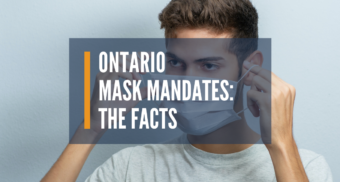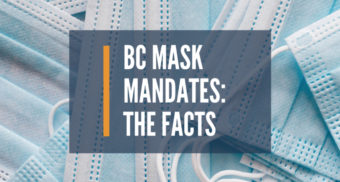COVID-19: New Ontario Regulation Hurts Employees, Misleads Employers

Misleading changes to employment law (Regulation 228/20) in Ontario could lead to more lawsuits for employers
The Government of Ontario has quietly made changes to the Employment Standards Act (ESA), via a new regulation, that removes government protection if an employee’s pay or hours of work are reduced or completely eliminated through a layoff during the COVID-19 pandemic.
This regulation was brought on with no consultation, no warning, and no explanation. It significantly harms the rights of workers, especially those in the lower-income bracket. Additionally, while this change is intended to benefit employers during the crisis, it may actually serve to hurt their interests.
Before you continue reading, we want to make one thing very clear:
- If you are an employee in Ontario, and your employer has reduced your pay or hours, has put you on a temporary layoff, or let you go permanently in response to the COVID-19 pandemic, YOU ARE STILL OWED SEVERANCE PAY, despite what Ontario’s regulation indicates.
- If you are an employer in Ontario, know that you cannot make changes to your employees’ pay, hours or job status (temporary layoff or permanent termination) without consequence. YOU ARE STILL REQUIRED TO PROVIDE FULL SEVERANCE PAY UNDER COMMON LAW
Employment Lawyer Jon Pinkus, Partner at Samfiru Tumarkin LLP, explained why Ontario’s new layoff regulation 228/20 doesn’t remove an employee’s ability to claim constructive dismissal during COIVD-19.
What did the Government of Ontario do?
On May 29, 2020, the Government of Ontario added Regulation 228/20, Infectious Disease Emergency Leave to the Employment Standards Act (ESA). The ESA regulates employee rights and employer obligations across the province.
Who does the Regulation 228/20 apply to?
The regulation applies to non-unionized employees in Ontario who temporarily experience a reduction in wages or hours of work because of COVID-19. This also applies to employees whose job is eliminated through a layoff due to the impact of the virus.
Are unionized employees impacted by the new ESA regulation?
No. The regulation does not affect unionized employees or the collective agreements that they are operating under.
How does the new regulation impact my rights as a non-unionized employee in Ontario?
Temporary Layoffs
Before the ESA was updated, a temporary layoff was automatically considered an official termination if the employee was not called back to work after a defined period of time (13 or 20 weeks). An employee that was laid off, but not recalled back to work would soon see their layoff expire, meaning they can automatically treat the layoff as a termination and obtain severance pay under the ESA (also known as their minimum severance pay entitlements).
Under the new regulation, a non-unionized employee that was laid off temporarily on or after March 1, 2020 is now deemed to be on an unpaid leave of absence (called the Infectious Disease Emergency Leave). The employee can no longer treat the temporary layoff as a constructive dismissal. Their ability to pursue severance pay under the ESA is eliminated. This regulation remains in effect until six (6) weeks after the emergency order is lifted in Ontario. This regulation also includes 35-week temporary layoffs, which are permitted in Ontario under certain circumstances.
Reduction in Pay or Hours Worked and Constructive Dismissal Claims
Before the introduction of Regulation 228/20, an employer in Ontario was not allowed to reduce pay or cut hours of work for an employee without triggering a claim for constructive dismissal. A constructive dismissal occurs when a company makes such a significant change to an employee’s job that they are found to have been terminated. The worker in question would be owed severance pay as per the ESA (generally referred to as their minimum severance pay entitlements).
The new regulation allows an employer to cut wages and hours without triggering a constructive dismissal claim under the ESA. An employee who sees their pay or hours slashed have lost their ability to claim their minimum termination or severance pay during these difficult times. This regulation remains in effect until six (6) weeks after the emergency order is lifted in Ontario.
Can I still get severance if I am laid off or my pay and hours are reduced in Ontario during the COVID-19 pandemic?
Yes. Non-unionized employees can still pursue full severance pay if they have been constructively dismissed through a cut in pay or hours, or put on a temporary layoff by their employer before, during or after the coronavirus emergency has subsided in Ontario.
Regulation 228/20 in the ESA does NOT impact your ability to pursue a severance package through legal means with help from a uniquely experienced Ontario employment lawyer at Samfiru Tumarkin LLP.
The Employment Standards Act guarantees your MINIMUM rights to severance pay (also known as termination pay) when you have been let go or fired from your job, either through a regular termination or a constructive dismissal. An employment lawyer can enforce your legal rights under common law, through the province’s court system. However, in nearly all cases, our team has utilized a unique resolution process that allows us to avoid taking matters to court. We resolve most matters in a cost-effective manner without setting foot in a court room.
Concerns with Regulation 228/20
Misleading information for employees and employers
The changes brought into being by this new regulation is extremely misleading to both employees and employees. It incorrectly suggests that an employer can, in fact, make significant changes to an employee’s terms of employment when , in fact they can’t. This regulation does not change that fact, as common law in Canada continues to forbid an employer from making those adjustments.
Unfortunately, due to this update to the ESA, employers in Ontario will now be more likely to take illegal actions. This will undoubtedly lead to an increase in employees pursuing constructive dismissal action against their employer. Businesses may end up being saddled with more legal action in the long run.
Qualifications for COVID-19 Period
The regulation removes the rights of employees to claim constructive dismissal for layoffs and reduction of hours or wages “for reasons related to the designated infectious disease during the COVID-19 period”. What are “reasons related to the designated infectious disease”? By that definition, even a company like Amazon, who is seeing a massive increase in profits due to the crisis, could qualify. In the midst of an unprecedented global pandemic, quite literally anything could be “reasons related to” COVID-19.
Impact on low-income workers
The changes to the ESA is extremely painful for low-income workers who in some situation may not be able to pursue a legal claim for constructive dismissal. Prior to Regulation 228/20, an employee could pursue their minimum severance pay through the Ministry of Labour. Low income earners, who are currently bearing the brunt of the economic impact of the coronavirus pandemic, are being penalized further.
“Leave of absence” while still working
The regulation “deems” employees to be on the Infectious Disease Emergency Leave if their hours of work are reduced, which makes little sense. This means that employees are still working most of their hours while simultaneously on a “leave of absence” from work.
No incentive to wait
Deemed terminations are now suspended for six weeks until after the end of the state of emergency. This means that employees who previously refrained from suing in the hopes that they would either be recalled or offered a severance package, will have much less incentive to wait. Notably, it suspends even 35-week layoffs, which for any employees laid off due to COVID-19 would not have ended until October/November.
Arbitrary period
A layoff that expired before May 29 will stand, but any that are set to expire going forward will be suspended. This means that an employer who temporarily laid off an employee without benefits on February 28 or earlier will have to pay termination pay, but an employer who temporarily laid off an employee on March 2, will not. The first case of COVID-19 in Ontario was January 25. The state of emergency was on March 17. Effectively making the cutoff on February 28 is arbitrary and nonsensical.




